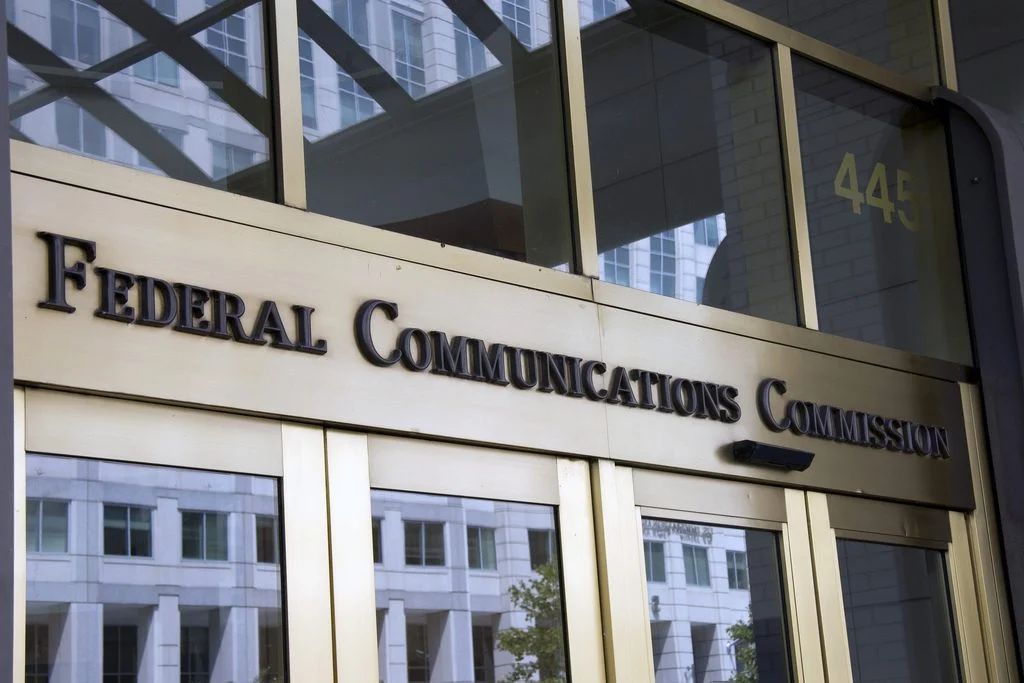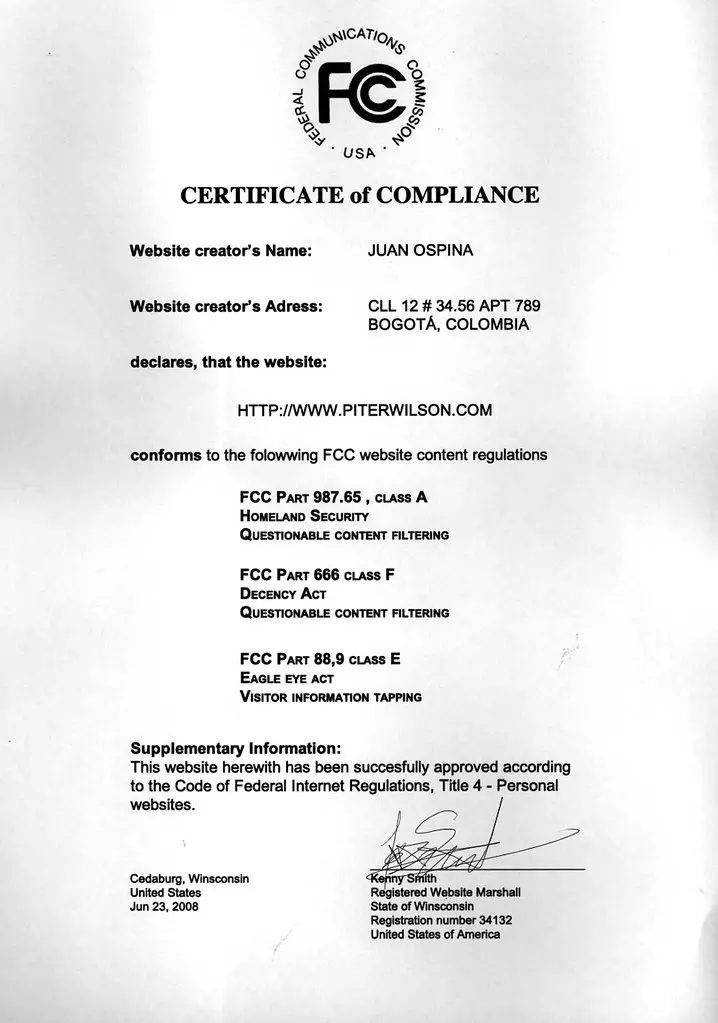Curious about FCC licensing for two-way radios? Don’t worry! I’m here to help. This article will cover everything you need to know, from understanding the process to ensuring you comply with regulations.
First, familiarize yourself with the requirements. The Federal Communications Commission (FCC) oversees the process and has set rules and regulations. These rules make sure radio frequencies are used correctly and without disruption.
To get an FCC license for your two-way radios, figure out which is best. This depends on the purpose of your radios and the frequency band they use. Make sure you choose the suitable license category for your needs.
Then, complete the application process. This includes filling out forms, providing documents, and paying any fees. Double-check all info before submitting your application to avoid delays or rejections.
You don’t need a license for all two-way radios. Specific frequencies like Family Radio Service (FRS) are for personal and recreational use and don’t require a permit. But if you use radios for business or professional purposes, you’ll need a license.
Now that you know what goes into FCC licensing, you can confidently navigate the process. Research and follow all guidelines the FCC sets to ensure legal compliance and smooth radio operation.
What is FCC Licensing for Two-Way Radios?

Do you need to use two-way radios? Understand FCC Licensing! It’s a requirement by the Federal Communications Commission for frequency use. You must apply with fees to obtain a license and the right to operate.
You must also meet criteria, like being 18 or older and having radio knowledge. Obtaining a license is simple, either online or by mail. After your FCC license, you can use two-way radios on designated frequencies without worry.
Did you know 35% of Americans have listened to AM/FM radio online? So, if you plan on using radios, comply with FCC licensing requirements. This way, you can enjoy reliable communication while staying within the law.
Why is FCC Licensing Important?
FCC licensing is a must for smooth communication. It ensures two-way radios are used legally and efficiently. Without a license, users risk interference with emergency frequencies and hefty fines.
It also guarantees that radio frequencies are used responsibly, preventing overcrowding and signal interference. The FCC can monitor and regulate two-way radios effectively through proper licensing.
To get an FCC license, do this:
- Figure out the type of license you need based on your radio operations – personal or business.
- Submit the necessary forms to the FCC correctly.
- Know the requirements and restrictions for your license category.
Following these steps raises your chances of obtaining a license quickly and avoids legal troubles. Compliance with the FCC regulations helps you and keeps the radio frequency environment orderly for all.
Step 1: Understanding the FCC Licensing Process
Guide to Understanding the FCC Licensing Process
To navigate the FCC licensing process for two-way radios, follow these five steps:
- Determine the type of license you need: Determine if you need a permit for a commercial two-way radio system or a private system.
- Identify the radio frequency you require: Determine the frequency band that best suits your needs. Frequencies range from Very High Frequencies (VHF) to Ultra High Frequencies (UHF).
- Research FCC regulations and requirements: Familiarize yourself with FCC regulations and requirements for two-way radio licensing. Ensure you meet all necessary criteria to obtain a license.
- Complete the FCC application: Fill out and submit the appropriate FCC application form for your license type. Provide accurate information about your organization and radio system.
- Pay the necessary fees: After applying, pay the required fees. The prices vary depending on the type of license and the number of frequencies requested.
It’s important to note that the FCC licensing process may involve additional steps and requirements specific to your situation. Be thorough in your research and consult with experts if needed.
To expedite the process, consider these suggestions:
- Double-check your application: Ensure all information on your application is accurate and complete. Any mistakes or omissions can delay the licensing process.
- Prepare supporting documentation: Gather any necessary documentation, such as proof of frequency coordination or other required certifications, before submitting your application.
- Follow up and stay organized: Keep track of your application status and any communications from the FCC. Respond promptly to any inquiries or requests for additional information.
Following these steps and suggestions, you can successfully navigate the FCC licensing process for two-way radios professionally and efficiently.
Get ready to dig out your detective hat because we’re on a mission to gather all the necessary information and documents for FCC licensing – don’t worry, bat signals are not required!
Gathering the necessary information and documents
To get the docs and info you need for an FCC license, follow these three steps:
- Figure out what docs you need. Research the permits, certificates, specs, financial statements, and other documents for your license. Make a list of all required docs.
- Gather the necessary info. Provide details about your company, like its name, address, and contact info. Get tech info related to your proposed operation or service.
- Organize and check. Put the docs in folders or digital files, labelled with relevant categories. Before submitting, double-check that everything is complete, accurate, and up-to-date.
Note: Different licenses require unique info not mentioned above. Take time to research the requirements for your license type.
The FCC used to struggle with manual paper filing systems, leading to application delays. But now, with technology, document submission is more efficient.
Filling out the FCC Form
To ensure a successful FCC license application, take note of these
- Identify the correct form – like Form 601 for wireless services or Form 605 for general radiotelegraph operator licenses.
- Gather all necessary info & docs – including personal details, business info, tech specs, and proof of eligibility.
- Follow instructions accurately – pay attention to formatting, signature fields, and supporting docs.
- Provide accurate responses – be thorough & precise when answering questions; double-check all info.
- Submit online or by mail – follow the specified guidelines for your preferred mode.
- Keep copies of all docs – as a safeguard in case of technical glitches, storage issues, or future inquiries from the FCC.
These steps demonstrate professionalism & credibility, streamline the application process, and increase the chances of a favourable outcome.
Step 2: Submitting the FCC Form
- Complete the FCC Form – Fill out the necessary information on the form accurately and legibly.
- Include Required Documents – Attach any required documents, such as proof of identification and equipment specifications.
- Submit the Form – Mail the completed form and documents to the designated FCC address.
- Keep a Copy – Keep a copy of the submitted form for your records.
It’s important to note that the FCC may take several weeks to process your application. During this time, refrain from operating the two-way radios until you receive the official license.
Pro Tip: Double-check all the information and documentation before submitting the form to avoid delays in the licensing process.
Ready to submit your FCC application online? It’s like ordering pizza, but instead of toppings, you choose frequencies!
Online submission process
Submitting an FCC Form online is easy and efficient. Here’s how:
- Fill Out FCC Form: Enter all details required, like personal info and purpose of submission.
- Review & Verify: Check your form for errors and missing info. Attach all documents needed.
- Submit: Click the submit button to send your app electronically.
- Confirmation Receipt: You’ll receive a receipt confirming successful submission.
Plus, for smooth online submission, follow these tips:
- Read FCC guidelines before filling out the form.
- Note deadlines to avoid missing them.
- Test your internet connection.
- Save copies of submitted documents.
Follow these suggestions to enhance the accuracy and efficiency of your submission process. Take advantage of FCC’s user-friendly method for more efficient interactions!
Paper submission process
To submit the FCC Form with paper, do this:
- Fill in the FCC Form with accurate info
- Print it on standard letter-sized paper
- Legibly fill in all required fields
- Sign and date the form where indicated
- Prepare attachments, like docs or payment
Note: There are other ways to submit the FCC Form, such as electronically or online.
For a smoother paper submission process, try these tips:
- Double-check all info before printing.
- Use black ink and clear writing.
- Organize and label attachments.
- Consider certified mail or a tracking service.
These suggestions can help streamline the paper submission process and increase the chances of timely processing of your FCC Form.
Step 3: Paying the FCC Fees
There are a few essential steps when paying the fees for your FCC license. Here’s a brief guide to help you with the process:
- Determine the applicable fees: The FCC has different prices depending on the type of license you are applying for. Make sure you know the correct fee amount before making a payment.
- Access the FCC Payment Portal: Visit the FCC’s website and navigate to the payment portal. You must create an account if you don’t have one already.
- Provide payment details: Enter the necessary payment information, such as credit card or bank account information. Ensure that the data is accurate and up-to-date.
- Submit the payment: Once you have entered the payment details, review the information and click the “Submit” button to initiate payment. Follow any additional instructions provided by the FCC.
- Keep a record of the payment: After completing the price, save a copy of the payment confirmation or receipt for your records. This will serve as proof of payment.
Remember, timely payment of your FCC fees is crucial to ensure your license remains valid. Failure to pay the fees can result in revoking your claim or imposing penalties. Stay on top of your payments to avoid issues with your two-way radio license.
Ensure you have followed all the required steps to pay your FCC fees. It’s essential to submit the correct amount and provide accurate payment details. Keep a record of the payment confirmation or receipt for future reference. Don’t forget prompt payment is essential to maintain your license and avoid penalties.
Get out your wallet; it’s time to play the fee structure game, where the only way to win is by paying up and hoping your two-way radios will magically start working.
Fee structure and payment options
Fees and payment methods for FCC are necessary to know. Here’s a table with the details:
Fee Structure and Payment Options:
| Fee Type | Amount (USD) |
|---|---|
| Application Fee | $100 |
| Regulatory Fee | $0.17 |
| Universal Service Fee | $0.28 |
| Regulatory Recovery | $2.33 |
| Total Fees | $2.78 |
These charges need to be paid when applying. Payments can be made by credit card, electronic funds transfer, or check sent to the address given.
It’s essential to pay all fees before the FCC’s deadline to avoid issues with your application.
The fee structure has changed over time to keep up with regulations. The current amounts and types have been calculated to support the FCC and create fair access to spectrum resources.
Knowing and following the fee structure is essential for anyone wanting FCC approval or authorization for their wireless services.
The FCC wants to make the application process easy for industry stakeholders and customers, so they provide precise info on fees and payment options.
Common payment issues and solutions
Paying FCC fees can come with everyday issues. Let’s take a look at these issues and their solutions.
Issues and Solutions:
- Payment Declined: Make sure you have enough funds—Double-check card details. Contact your bank.
- Incorrect Amount: Check calculations. Verify fee structure.
- Payment Confirmation Not Received: Check your spam/junk folder—contact FCC support.
- Delayed Payment: Review payment deadline.
- Refund Request: Follow FCC refund guidelines. Supply necessary paperwork.
A few extra points to remember:
- Ensure enough funds before paying.
- Review the fee structure carefully.
- Check the spam/junk folder for the confirmation email.
- Make payments on time to avoid delays/penalties.
Take action now! Resolve any payment issues quickly and pay FCC fees accurately and on time. Your commitment will help create a smoother experience with the FCC. Don’t let common payment issues stop you from reaching your goals. Act now and stay ahead of this FCC journey.
Step 4: Waiting for FCC Approval
Waiting for FCC Approval
Once you have completed the necessary steps for FCC licensing, you will need to wait for approval from the FCC. This process ensures that your two-way radios meet all the FCC’s requirements and regulations.
Here is a step-by-step guide to waiting for FCC approval:
- Submit your application: After completing the required paperwork and providing all the necessary documentation, submit your application to the FCC.
- Payment of fees: Pay the required fees associated with your application. These fees vary depending on the type of license you are applying for.
- Wait for processing: Once your application and fees are submitted, you must patiently wait for the FCC to process your request. This can take varying amounts of time, depending on the workload of the FCC and any other factors that may affect the processing time.
- Document review: During the waiting period, the FCC will review your application and all accompanying documents to ensure they are complete and correct. They may also conduct any necessary background checks or inspections.
- Additional information request: In some cases, the FCC may request additional information or clarification regarding your application. Responding promptly to such requests is essential to avoid further delays in the approval process.
- Approval notification: Once the FCC completes its review and all requirements are met, you will receive news of the approval. This will typically be in the form of a license document or a letter confirming your acceptance.
It’s worth mentioning that the waiting period for FCC approval can vary greatly depending on various factors. Being patient and prepared for potential delays is essential, as it is crucial to ensure compliance with all FCC regulations.
As you wait for FCC approval, it may be helpful to take this time to prepare for the next steps in using your two-way radios legally. Familiarize yourself with the FCC rules and regulations related to operating your radios, and start planning to train your staff on proper radio etiquette and usage.
Following these steps and being proactive during the waiting period can ensure a smooth and successful FCC approval process for your two-way radios.
Waiting for FCC licensing is like watching paint dry, except you can’t enjoy the fumes.
Typical processing time
Estimates for the FCC approval process vary, from 2-6 months for application review, 1-2 months for public notice, and 1-3 months for a decision. Complexity and delays can alter these times.
To expedite the process, submit all documents and info accurately and promptly. Keep open communication with the FCC too. And lastly, consider engaging experienced legal counsel for guidance. This can help reduce the approval duration and enable quicker market entry.
Checking the status of your application
Keep an eye on your application! Go to the FCC website, then look for the application tracking page. Put in your unique ID and press ‘Check Status.’ You’ll be taken to a page with info on your app.
Remember, it may take some time for it to be processed. Check back often for updates. If you have any questions, contact the FCC directly.
Here’s a tip: Jot down a reminder to check the FCC website so you don’t miss any updates on your application’s progress!
Tips and Tricks for a Smooth FCC Licensing Process
Tips and Tricks for a Smooth FCC Licensing Process:
- Prepare All Required Documentation: Ensure you have all the necessary documentation before starting the FCC licensing process. This includes your FCC Form 601 application, proof of identification, business documentation (if applicable), and other supporting documents required for your license type.
- Double-Check Your Application: Carefully review your FCC Form 601 application to ensure all information is accurate and complete. Any errors or missing information can delay the licensing process. Consider seeking professional assistance to ensure your application is completed correctly.
- Submit Your Application Electronically: The FCC strongly encourages applicants to submit their applications electronically through the Universal Licensing System (ULS). This method is faster, more efficient, and reduces the chances of errors. Follow the ULS instructions carefully when submitting your application.
- Follow Up on Your Application: After submitting your application, regularly check the status of your application through the ULS. If any issues or additional information are required, promptly respond to the FCC’s requests. This will help expedite the licensing process.
Additional Considerations:
It is important to note that FCC licensing processes may vary depending on the specific radio service you are applying for. Familiarize yourself with the requirements and procedures specific to your radio service to ensure a smooth licensing process.
Suggestions:
- Create a checklist: Make a checklist of all the required documents and steps involved in the FCC licensing process. This will help you stay organized and complete all necessary tasks.
- Seek professional assistance: If you are unsure about any aspect of the FCC licensing process, consider consulting with a professional specialising in FCC licensing. They can provide guidance and ensure that your application is accurate and complete.
- Be proactive: Stay proactive throughout the licensing process by regularly checking the status of your application and promptly responding to any requests or inquiries from the FCC. This will demonstrate your commitment and help expedite the process.
- Plan: Start the FCC licensing process well in advance to allow for any potential delays or issues that may arise. By planning, you can ensure sufficient time to gather all necessary documents and complete the application accurately.
Remember, obtaining an FCC license requires careful attention to detail and adherence to specific requirements and procedures. Following these tips and tricks allows you to navigate the FCC licensing process smoothly and efficiently.
Who needs luck when you’ve got FCC licensing for two-way radios? Avoid these common mistakes, or you’ll be stuck with more static than a bad hair day.
Common mistakes to avoid
Common Blunders to Steer Clear Of:
- Furnishing incomplete or incorrect details: Assure you to double-check all the data before you submit your FCC license application. Any lacking or wrong information can cause delays or even refusal.
- Bypassing regulations and requisites: Get acquainted with the FCC rules and regulations that apply to your license type. Not obeying these prerequisites can lead to punishments and losing your license.
- Not accomplishing the needed paperwork: Ensure you have completed all the required forms accurately and delivered them punctually. Absent paperwork can significantly drag out the licensing procedure.
- Failure to keep accurate records: As soon as you get your FCC license, it’s critical to maintain thorough and recent forms of any transformations, renewals, or alterations. Failing to do so could result in difficulties in the future.
Besides, do not overlook essential deadlines related to your FCC license application. These deadlines are critical for a hassle-free processing experience.
True Story:
In 1934, Congress built the Federal Communications Commission (FCC) as an autonomous agency regulating interstate communications by radio, TV, wire, satellite, and cable.
Since then, many people have faced obstacles during the licensing process because of the common blunders already mentioned. By learning from their experiences, you can dodge these problems and make sure a smoother path towards getting your FCC license.
Resources for additional assistance
Gain the edge in the FCC licensing process by tapping into some valuable resources! Here are the top ones to consider:
- Online forums: Connect with experts and other applicants for guidance and answers.
- Professional associations: Get specialized info and networking opportunities.
- FCC website: Get official info direct from the regulator.
- Local libraries: Find reference materials and publications.
- Consultancy services: Streamline the process with help from pros.
- Mentoring programs: Match up with experienced professionals for guidance.
Note: Details may vary for applications or industries, so always check official sources and seek advice.
For a smooth licensing process:
- Learn all relevant regulations.
- Keep records of all communications and documents.
- Double-check forms and materials.
- Follow instructions.
- Clarify anything unclear.
- Maintain contact with authorities and third parties.
Optimize your efforts and stay confident with these resources! Best of luck!
Conclusion
The end is near! We’ve covered lots on FCC licensing for two-way radios. Now you’re ready to dive into the world of two-way radios. Let’s go over some unique details.
Did you know frequency bands are designated for amateur radio operators, public safety agencies and baby monitors? It’s incredible how our airwaves are split.
1934 the FCC was created due to chaos from unregulated radio broadcasting. Interference was everywhere, so the FCC brought order to the airwaves. It paved the way for reliable communication.
This guide has provided a foundation for FCC licensing for two-way radios. Remember, technology and regulations are constantly changing. Stay curious and keep up with developments in the radio communication world. Conquer the airwaves!
Frequently Asked Questions
FAQ 1: Can I use a two-way radio without an FCC license?
No, you generally need an FCC license to operate a two-way radio. The license ensures that you use the radio legally and prevents interference with other radio users.
FAQ 2: How do I obtain an FCC license for my two-way radio?
You must apply to the FCC with the required information and fees to obtain an FCC license. The process might sound daunting, but don’t worry; we’ll guide you through it step-by-step!
FAQ 3: Are there different types of FCC licenses for two-way radios?
Yes, various types of licenses depend on your specific use case. Some standard appointments include the General Mobile Radio Service (GMRS), Family Radio Service (FRS), and Business/Industrial Land Mobile Radio Service (LMR).
FAQ 4: How long does it take to get an FCC license?
The processing time for an FCC license can vary, but it usually takes several weeks to a few months. It’s best to submit your application well in advance of when you plan to use the radio to avoid any delays.
FAQ 5: Can I use my FCC license for multiple two-way radios?
You can typically use a single FCC license for multiple two-way radios. This is especially true for charges like GMRS or LMR, which cover a group of radios a family or business uses.
FAQ 6: What happens if I use a two-way radio without an FCC license?
Using a two-way radio without an FCC license can result in fines or penalties. It’s essential to comply with the regulations to avoid legal trouble and ensure fair access to radio frequencies for everyone.




